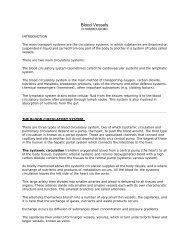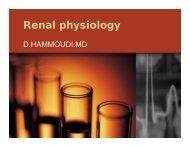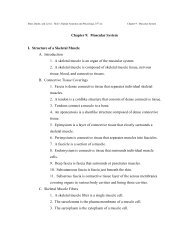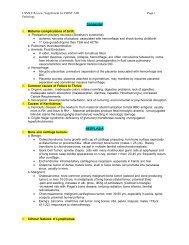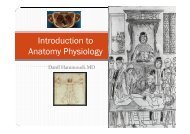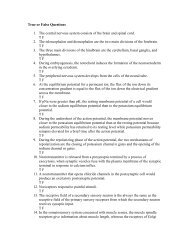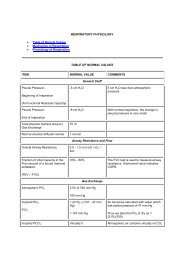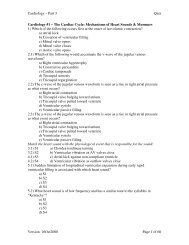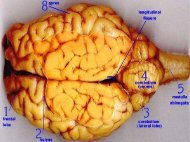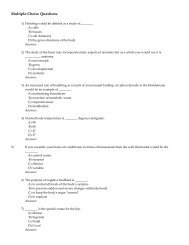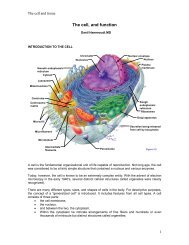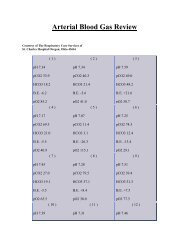L:\usmle review 7 - Sinoe medical homepage.
L:\usmle review 7 - Sinoe medical homepage.
L:\usmle review 7 - Sinoe medical homepage.
Create successful ePaper yourself
Turn your PDF publications into a flip-book with our unique Google optimized e-Paper software.
30. A couple presents to a clinic for workup of infertility after 5 years of unprotected intercourse.<br />
The wife denies any <strong>medical</strong> problems and notes regular menstrual cycles. The husband states<br />
that he has had chronic sinusitis and lower respiratory tract infections. Physical examination of<br />
the woman is unremarkable. Examination of the man is remarkable for dextrocardia. Further<br />
workup of the husband will most likely reveal<br />
(A)<br />
(B)<br />
(C)<br />
(D)<br />
(E)<br />
azoospermia<br />
germinal cell aplasia<br />
immotile sperm<br />
isolated gonadotropin deficiency<br />
varicocele<br />
30. The correct answer is C. The husband is suffering from Kartagener syndrome, an autosomal<br />
recessive disorder characterized by infertility, situs inversus, chronic sinusitis, and bronchiectasis.<br />
The underlying cause of these varied manifestations is a defect in the dynein arms, which are<br />
spokes of microtubule doublets of cilia in the airways and the reproductive tract. Since sperm<br />
motility is dependent on the functioning of cilia, infertility frequently accompanies this disorder.<br />
Situs inversus occurs because ciliary function is necessary for cell migration during embryonic<br />
development.<br />
Azoospermia (choice A) is not a feature of Kartagener syndrome, as sperm production or<br />
survival is not affected in this disorder.<br />
Germinal cell aplasia (choice B), also known as Sertoli-only syndrome, is characterized by<br />
oligospermia or azoospermia.<br />
Isolated gonadotropin deficiency (choice D) is characterized by delayed or incomplete pubertal<br />
maturation.<br />
Varicocele (choice E) results in an increased testicular temperature, decreasing the count of<br />
normal, viable sperm.



